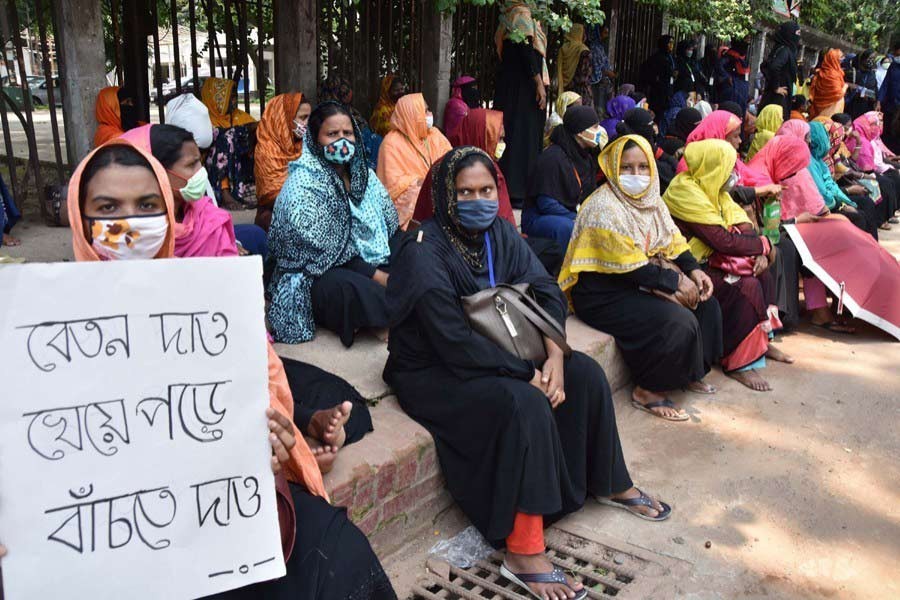In the 10 months of a year when Covid-19 claimed more than 700 lives a month on an average, 729 fatalities at workplaces do not, on paper, look frightening enough. But a closer look will definitely present a disquieting picture. Factories and industries could not run full steam and a large number of workers were retrenched. So apart from the 729 deaths, injuries to 433 more people expose the workplace hazard on a high side even though the death last year dropped from 1,200 in 2019. Of particular concern is the fact that 596 of the dead fell victim to different kinds of physical torture. This finding along with several other unsavoury incidents brought under the scrutiny by the Bangladesh Institute of Labour Studies (BILS) is good enough to confirm that workplaces are fraught with excessive and unnecessary hazards.
Why should workers be subjected to physical torture? Of the 596 so tortured, 316 died, 229 sustained injuries, eight went missing, 24 committed suicide, 14 were rescued from kidnappers and five others' case has not been mentioned. Clearly a hostile regime prevails in factories or manufacturing units where such deaths occur. Relations between management and employees/workers can sour but this should not prompt either side to go for actions that account for lives. What about the missing workers or employees? Most likely they have also been murdered. Then it is anybody's guess when workers or employees are driven to take their own lives. In a civilised society, it is unimaginable that manufacturing enterprises can be places of torture. Subjecting workers to perform their duties in unhygienic and hazardous environment is criminal enough. Factory owners try to save costs on protective gears and aid equipment only to expose workers to dangers. But in case of subjecting workers to physical torture, it is without doubt a culpable crime.
The fact that of the last year's 593 incidents of labour unrest, the highest 264 took place in the garments sector and the second highest 49 in the jute sector is indicative that developments are far from ideal in these two sectors and workers have genuine grievances. Some of the garments factories and jute mills both in public and private sector have become losing concerns for various reasons. Industrial rules and regulations are often defied and poor workers become the number one casualty in such cases. Even their arrear dues are not paid for months and the industrial environment turns explosive.
The history of the much vaunted industrial revolution testifies that workers have been inhumanly exploited right from the time the machine took over manual performances in Britain in the 18th century. Situation has definitely changed but in factories like those of the readymade garments, things have not improved commensurate with the benefits the sector garnered. Unsurprisingly, the transport sector suffered the highest number of casualties with 348 deaths followed by 84 in the construction sector last year. Why it happened is understandable. Lacking in maintenance of regulations, monitoring and supervision together with recklessness, the transport sector has become a monster incarnation. The manufacturing sector follows it close behind. Proper implementation of rules and regulations can curtail serious accidents and fatalities in both these sectors.


